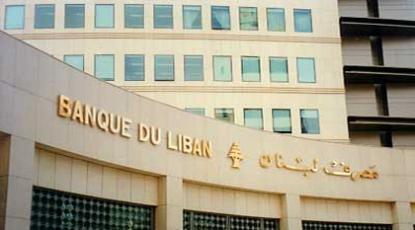 Lebanon’s Richest Need To Take a Haircut
Lebanon’s Richest Need To Take a Haircut
Those who benefited from sky-high interest rates have to give up some of their millions.
At the root of the economic grievances fueling Lebanon’s mass protests lies what looks like a regulated Ponzi scheme. The problem will not be solved by a change of government—even with a cabinet of experts—or by injections of capital from friendly Arab states: it will require tougher measures, including a compulsory haircut for many of the country’s richest citizens.
For decades, Lebanon depended on remittances to sustain its economy and the lira peg. Fixed at 1507.5 lira to the U.S. dollar since 1997, the peg resulted in an overvalued currency, relative to the country’s productivity. This gave the Lebanese a higher income and standard of living than in any neighbouring Arab country, allowing them to spend on travel, cars, clothes, and gadgets.
During the 2008 credit crisis, Lebanon had a reverse capital flight to its perceived safety. Rich Lebanese expats stopped trusting foreign banks and moved their money home, helping to create a balance-of-payment surplus of $20 billion between 2006 and 2010. This surplus was squandered on real-estate development and government waste, resulting in a bubble, the remnants of which can today be seen in the shiny, vacant towers dotting the Beirut skyline.
Starting in 2011, the surplus morphed into a persistent annual deficit. It wasn’t until 2016 that the Banque du Liban recognized the danger signs. The central bank initiated a series of so-called “financial engineering” transactions, which were equivalent to swapping lira for fresh (that is, attracted from overseas) dollars at exorbitant interest rates reaching 14-30%.
Most of the lira thus printed by BDL was recognized as revenue, giving banks record profits, despite a stagnant economy. The two top banks alone made over $1 billion in 2016 in these artificial profits; the bonuses paid to senior managers were in real cash.
The interest owed to earlier depositors was sourced from new investors. Neither local nor foreign analysts picked up on this, even though the mechanism was suspiciously similar to what an infamous Italian immigrant did in Boston a century ago. All employed Lebanese have benefited from this particular variant of the Ponzi scheme: the dollar peg meant that their salaries are worth more than in a floating-currency regime.
Due to the crowding-out effect, the main losers are the youth, among whom the unemployment rate is almost 40%. In the Lebanese paradigm, unemployed youth are expected to emigrate, find jobs elsewhere and transmit remittances—in effect, to continue funding the scheme. But this has become increasingly difficult as job opportunities overseas have dwindled.
Most analysts have been too distracted with traditional metrics, such as government debt worth nearly $90 billion, and have been neglecting the fact that BDL has borrowed $110 billion from Lebanese banks—out of $170 billion in total deposits. Half the dollar deposits in Lebanese banks are now with BDL, with the rest in lira. There is just no way for BDL to return this money.
Meanwhile, the astronomically high interest rates have created a cohort of millionaires and decamillionaires. But their account values are just computer entries, produced by compounded rates of return with no productive investment yielding real returns on the other side. Which is why, as bank deposits increased artificially, real liquidity shrank.
The real dollars in BDL reserves, plus bank deposits with custodial accounts, amount to around $40 billion: in other words, there’s only one dollar of liquidity for every $3 dollars of claims. This would normally not be a problem in fractional banking, except that all these liabilities are in a foreign currency that BDL cannot print nor generate locally.
The good news is that almost all this debt is internal. This makes the solution quite simple: a national restructuring that equitably distributes losses, clawing back the phantom returns. Less than 1% of depositors, or 24,000 accounts, account for nearly $90 billion, with the average account worth $3.5 million. (Assuming each millionaire has three or four accounts, a common practice in Lebanon, we may be talking about no more than 6,000-8,000 account holders.)
But the owners of these phantom-money accounts spend some of it in the real world—on a Bentley, say—which consumes BDL reserves. Similarly, any Lebanese earning in lira consumes BDL reserves every time they go on vacation to Greece or buy an imported product.
How to fix the problem? The central bank can start by imposing capital controls on transfers overseas and curtail cash withdrawals; some banks are already doing this, but it would be more efficient and equitable if BDL made it compulsory for all.
Capital controls would only stanch the bleeding. Healing the wound would require more drastic measures, such as a haircut on all accounts above $1 million. (The extent of the haircut would depend on where BDL is prepared to start cutting: the larger the account, the deeper the cut can be.) This may require a ministerial decree, possibly even parliamentary approval. Legislators could call it a deferred tax, if that makes it politically more palatable.
This will not be as catastrophic as it sounds. A Lebanese who deposited $10 million 10 years ago, at 12%, holds $31 million today. With a 50% haircut, they would have $15.5 million, a quite reasonable return of 4.5%.
Lebanon officials may balk at trying something no other country has attempted before, but since their problem is sui generis, the solution can hardly be otherwise.
This column does not necessarily reflect the opinion of the editorial board or Bloomberg LP and its owners.
Leave a Reply
You must be logged in to post a comment.